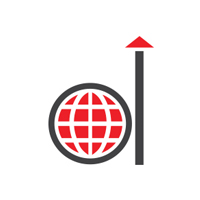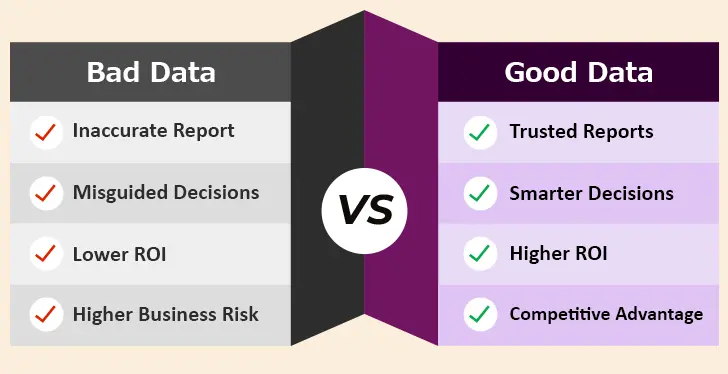“At least 40% of all businesses will die in the next 10 years if they don’t figure out how to change their entire company to accommodate new technologies.” – John Chambers, Former CEO of Cisco.
Salesforce is one of the most widely used cloud-based CRM platforms. It offers a unique shared view of each customer for the multiple customer-facing departments within an organization. The platform requires professional upkeep so that it stays relevant to the evolving needs of a business. The platform needs regular maintenance and support to achieve peak performance. Therefore, it is imperative for organizations to have a well-defined plan of Salesforce managed services that includes integrations, customizations, ongoing maintenance, and support.
In most of the small and medium firms, the team who takes care of the managed services can include only a part-time Salesforce administrator or a full team comprising solution engineers, architects, consultants, testers, administrators, and developers. The size of your team depends on the number of users, the complexity of Salesforce instances, and the system adoption throughout your company. It is for you to decide whether to outsource your Salesforce instance to a certified Salesforce partner, support it internally, or go for a combination of both.
Table of Contents
Why Do You Need Salesforce Managed Services?
Are There Specific Factors You Should Consider When Maintaining Your Salesforce Instance?
Why Do You Need Salesforce Managed Services?
According to Statista, the annual revenue of Salesforce touched $34 billion in its 2024 fiscal year, highlighting its widespread adoption. Many companies invest heavily in Salesforce but struggle to maximize its potential. Common challenges include underutilized features, poor user adoption, outdated configurations, and integration issues. Salesforce partner management services offer a way to keep your CRM efficient, secure, and aligned with your business goals.
With a managed service provider, you gain access to a team of certified experts who handle everything from health checks to release management. This support helps reduce downtime, improve user experience, and drive better ROI from your Salesforce investment. Here are the key reasons to consider Salesforce CRM managed services:
- Lack of in-house Salesforce expertise
- Growing system complexity
- Need for faster updates and support
- Ongoing integration and customization requirements
- Desire to focus internal resources on the core business
To help you decide whether to manage Salesforce in-house or outsource it, here’s a side-by-side comparison of in-house and Salesforce managed services benefits:
| Aspect | In-House Admin | Certified Managed Service Provider |
|---|---|---|
| Support | Limited to office timings | 24/7 availability |
| Cost Efficiency | High cost to retain | Predictable monthly fee |
| Scalability | Fixed resources | Scalable teams |
| Proactive Monitoring | Rare | Standard Practice |
Are There Specific Factors You Should Consider When Maintaining Your Salesforce Instance?
“The secret to successful hiring is this: look for the people who want to change the world.” – Marc Benioff, Co-founder, Chairman, and CEO of Salesforce.
Yes, there are certain key factors that govern how an organization maintains its Salesforce instance. Marc’s above-mentioned philosophy extends to how businesses should approach their Salesforce strategy. They must find partners who are dedicated to transforming operations. Here are some key factors to consider when choosing Salesforce managed services:
1. Continuing Salesforce CRM Management and Optimization
Optimized reports and regular health checks are the most basic requirements of any Salesforce instance. These functionalities let you know if your Salesforce instance requires attention. You also need to keep yourself updated about any outmoded technologies or features. As the Salesforce platform keeps evolving continuously, some of its features become outdated over time. Salesforce generally notifies its users with multiple advance notices when any changes in the CRM happen. Hence, it is vital to take into consideration the effect of the updates on your Salesforce instance on time.
2. Security Audits
The Salesforce CRM platform provides users with advanced security features that include multiple settings for configuring the Salesforce instance. This helps your instance remain in compliance with the best practices of the industry and the specific policies of your organization. The Salesforce managed services provider needs to include periodic reviews of your Salesforce security configuration so that it complies with best practices and policies. You also need to have a process in place that reviews the activity of users to assess their permissions and access levels. If too much data access is provided to users, challenges like security breaches, unapproved changes to the system, and unauthorized access to data can occur.
3. Salesforce Release Management
Salesforce comes up with three main releases during the year in spring, summer, and winter. The Salesforce managed service partner needs to have a process in place for reviewing each release. To comprehend the impact the update will have on Salesforce systems, the partner needs to update or create a dependency and impact plan. Salesforce releases typically don’t have an immediate negative impact on your organization. However, certain updates or announcements within a release may affect your Salesforce org in a subsequent release.
Often, feature changes introduced in a release can impact how those features function, and in some cases, affect system performance or security. At the same time, new functionalities may be added to the products you use, which can substantially improve productivity but might need some work for their implementation. If there’s a custom code in your org that uses functions that won’t be supported in the future, you need to ensure that these get addressed on time, so there’s no rush at the last moment.
Maximize Your Salesforce Investment:
4. Planning and Monitoring
To ensure the proper working of IT systems, continuous monitoring and planning are needed. The same goes for Salesforce. The CRM needs to be monitored by professionals, and the level of monitoring depends on the customization of your business. The level and type of monitoring vary from simple log monitoring to complex system monitoring. Managed services experts are adept at monitoring the Salesforce CRM to ensure that it works effectively at all times. They also take into consideration the proper incident handling procedures with multiple systems and components.
For instance, if your Salesforce is integrated with external third-party systems in the cloud and/or on databases, feeds, APIs, premises, etc., you will require a powerful monitoring plan to reduce the downtime of the connected system. This will ensure that the original goals of data flow, compliance, and visibility are met regularly. It is important for the monitoring plan to include monthly, weekly, and daily checklists and SOPs that address all possible scenarios.
You also need to have a comprehensive adoption plan under a change management program that ensures the users can log in and use Salesforce seamlessly. It is challenging but important to monitor user adoption and take feedback when users are not using Salesforce. It becomes tough to get users to re-engage if adoption after implementation is slow. For better adoption, it is important to have an ongoing improvement process that ensures the grievances of the users are taken into consideration. Here are some common user adoption strategies:
- Onboarding programs and tutorials
- Regular feedback surveys
- Dashboards measuring active usage
- Gamification to encourage usage
5. Management Goals
When the leadership team decides to invest in Salesforce CRM management, they need to establish a fixed set of goals. It is important to properly establish the goals and establish the ROI metrics. You need to be aware of the state of systems, internal processes, and KPIs of multiple business units and processes before implementing Salesforce and the expected state of those processes and systems post implementation.
You need to define what a successful Salesforce implementation looks like for you and what your quantifiable factors are. Create a dashboard or report with the important metrics and begin measuring. The most important metric you need to consider is user adoption. Set up a feedback mechanism that allows you to gather information from users to continuously improve user experience to boost adoption and improve their productivity. It is important to clearly define and review ROI dashboards and reports on a regular basis.
Steps to define Salesforce CRM management goals include:
- Set SMART KPIs (Specific, Measurable, Achievable, Relevant, Time-bound)
- Create pre- and post-implementation benchmarks
- Build role-based dashboards
- Measure key metrics like sales velocity, lead conversion, and customer retention
6. Data Quality and Governance
Clean, consistent data is the engine oil of Salesforce. Without proper data governance, your dashboards become meaningless, and your automations may backfire. Let’s explore the impact of data quality:
Regular deduplication, data enrichment, and validation rules ensure Salesforce stays trustworthy. Governance plans should include policies for data entry, access levels, field usage, and archiving. A small error in data input can ripple across your entire reporting structure. So, treat it with the respect it deserves.
7. Professional Expertise
It is important that you have your Salesforce system frequently reviewed by a Salesforce professional. This becomes all the more important for organizations that have decided to use Salesforce as a long-term solution for their business and make ongoing changes to their system for customization and integration with other systems. Salesforce CRM managed service providers offer you access to specialized expertise whenever you need it without having any other affiliation with your organization. You just need to describe your Salesforce requirements, and the experts will help you out with the same.
8. Change Management
“You can’t just walk away from change initiatives once a feature is live or you put in a new process document,”– Aliza Hutchison, Salesforce director of change management.
Even the most advanced Salesforce system won’t succeed without proper user training and an effective change management plan. Employees need to know not only how to use Salesforce but why it’s essential. This fosters better adoption and aligns your workforce with strategic goals.
Training should be role-specific and delivered in digestible formats, such as videos, live sessions, or knowledge base articles. Change management encompasses stakeholder communication, training feedback loops, and internal champions who support the adoption of new initiatives.
Without it, even the best Salesforce strategy can flop.
Summing up
Most organizations do not have dedicated, certified Salesforce professionals on staff to address their complex and critical Salesforce issues. It might also not be financially feasible for them to hire and retain these skilled individuals. Thus, in cases where you don’t have a professional on staff trained as a Salesforce Admin to manage your Salesforce instance, you need to consider hiring an expert Salesforce partner. The expert will provide you with Salesforce managed services for the effective upkeep and maintenance of your Salesforce CRM platform. Salesforce service management will allow your team to concentrate on the core business needs and more pressing issues of your organization while the Salesforce experts focus on the maintenance of your Salesforce org.
FAQs
Q. What are Salesforce managed services?
A. Salesforce managed services are ongoing support and maintenance offerings for your Salesforce platform. Instead of juggling updates, user issues, and system tweaks on your own, you hand them over to certified experts. These services can cover everything from security audits to new feature rollouts. They keep your Salesforce instance sharp, smooth, and scalable.
Q. Why do companies use Salesforce managed services?
A. Companies use managed services because maintaining Salesforce in-house can be time-consuming and expensive. With experts handling the details, internal teams can focus on strategic tasks that drive results. Managed services bring consistency, reduce downtime, and help you stay ahead of updates and industry changes. They’re especially helpful when you need expertise on tap but don’t want to hire a full-time crew. It’s smart outsourcing without headaches.
Q. When to hire a Salesforce consultant?
A. You should consider hiring a Salesforce consultant when your system feels clunky, underutilized, or too complex for your in-house team to manage effectively. If you’re about to implement Salesforce for the first time or planning a significant upgrade, a consultant can be a game-changer. They help shape strategy, streamline operations, and avoid costly blunders. Think of them as your trail guide through the Salesforce wilderness. When in doubt, it’s better to bring in a pro than fly solo.
Q. Is Salesforce managed services worth it?
A. Yes, especially if your team is stretched thin or lacks Salesforce know-how. Managed services provide continuous care, like bug fixes, user training, and performance boosts. They often cost less than hiring full-time staff and give you access to a whole toolbox of specialists. You get peace of mind, predictable costs, and a CRM that actually delivers value. It’s like upgrading from a bicycle to a well-oiled machine.
Q. What does a Salesforce administrator do?
A. A Salesforce administrator keeps your CRM running like a well-behaved robot. They handle user setup, permissions, dashboards, automations, and data cleanliness. When something breaks or users get stuck, they’re the first responders. Admins also serve as the bridge between business needs and technical capabilities. They may not wear capes, but they quietly keep your CRM world from falling apart.







